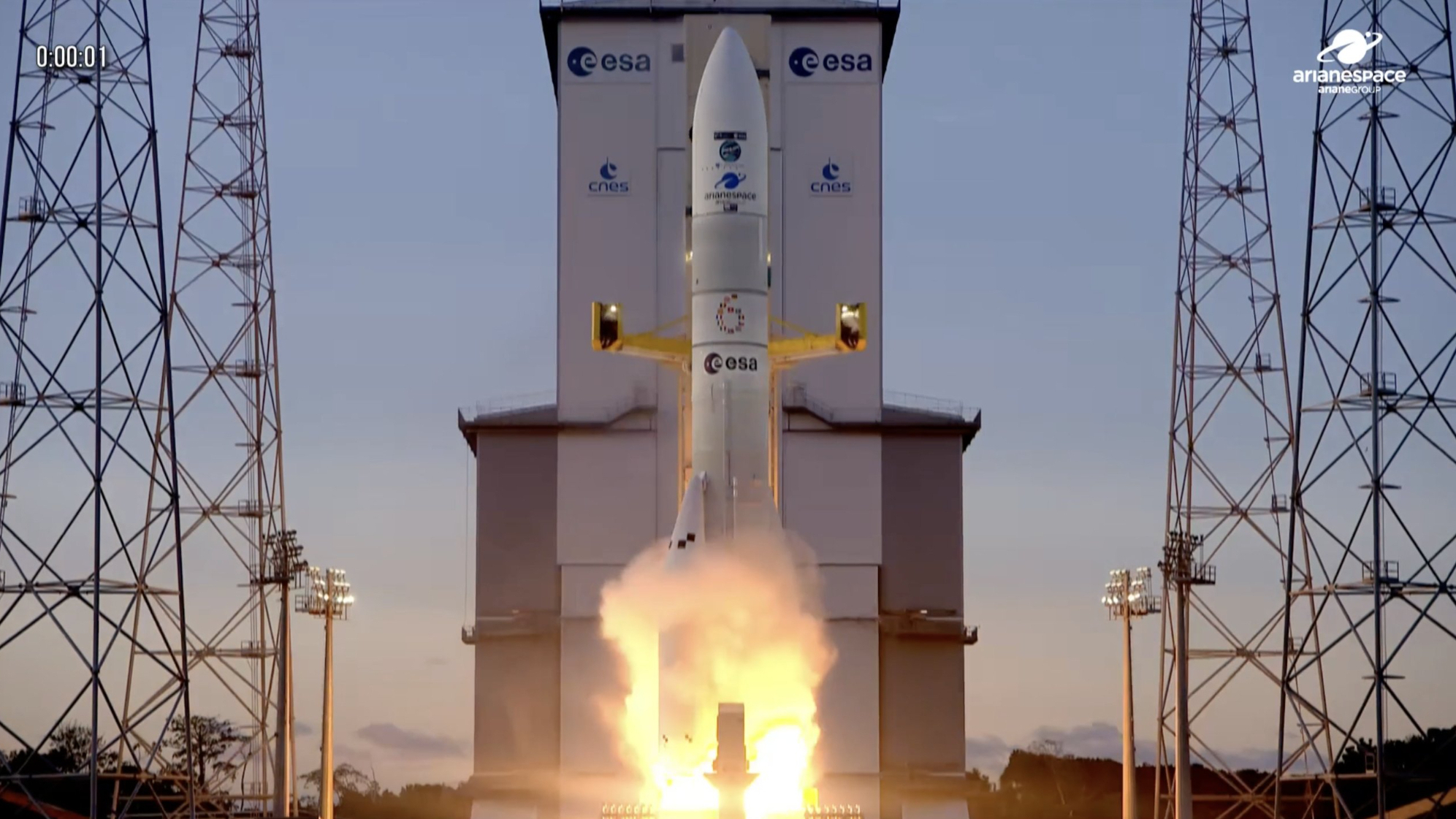NASA Mars Lander Arrives at Launch Site to Prep for May Liftoff

A NASA spacecraft that will probe the deep Martian interior has arrived at its launch site to prep for its planned May liftoff.
The InSight lander touched down at Vandenberg Air Force Base in California yesterday afternoon (Feb. 28) aboard a C-17 cargo plane, NASA officials said. InSight made the trip from the Denver facilities of the company that built it, Lockheed Martin Space Systems.
"The Air Force C-17 crew from the 21st Airlift Squadron gave us a great ride," InSight project manager Tom Hoffman, from NASA's Jet Propulsion Laboratory in Pasadena, California, said in a statement. "Next time InSight travels as high and as fast, it will be about 23 seconds into its launch, on the way to Mars." [The Mars Insight Mission in Pictures]
That launch is scheduled to take place during a five-week window that opens May 5. InSight will ride atop a United Launch Alliance Atlas V rocket that lifts off from Vandenberg, in the process becoming the first planetary mission ever to launch from the U.S. West Coast, NASA officials said. (The agency's other robotic explorers have launched from Florida.)
Engineers and technicians will perform a number of tests on InSight between now and May 5, to make sure that the craft survived its trip from Colorado in good health and to get it ready for liftoff.
"One of the most important activities before launch is to load the spacecraft with the fuel needed for the journey to Mars," Hoffman said. "After fuel loading, the spacecraft will undergo a spin-balance test to determine precisely the center of mass. This knowledge is needed to be sure the entry and descent into the Mars atmosphere goes as planned."
If all does go according to plan, InSight — whose name is short for Interior Exploration using Seismic Investigations, Geodesy and Heat Transport — will touch down on Mars in November, then begin studying the Red Planet's interior using two main science instruments. One is a heat probe that will hammer itself about 16 feet (5 meters) underground, and the other is a suite of supersensitive seismometers known as the Seismic Experiment for Interior Structure (SEIS).
Breaking space news, the latest updates on rocket launches, skywatching events and more!
InSight's observations should reveal a great deal about Mars' structure and composition, leading to a better understanding of how rocky planets form and evolve, mission team members have said.
The solar-powered lander was originally scheduled to launch in March 2016, but a leak in the vacuum chamber surrounding SEIS' seismometers delayed the liftoff. (Mars and Earth align favorably for interplanetary missions just once every 26 months.)
InSight will also carry to Mars the names of several million people, including "Star Trek" actor William Shatner, aboard two specially engraved microchips.
Follow Mike Wall on Twitter @michaeldwall and Google+. Follow us @Spacedotcom, Facebook or Google+. Originally published on Space.com.

Michael Wall is a Senior Space Writer with Space.com and joined the team in 2010. He primarily covers exoplanets, spaceflight and military space, but has been known to dabble in the space art beat. His book about the search for alien life, "Out There," was published on Nov. 13, 2018. Before becoming a science writer, Michael worked as a herpetologist and wildlife biologist. He has a Ph.D. in evolutionary biology from the University of Sydney, Australia, a bachelor's degree from the University of Arizona, and a graduate certificate in science writing from the University of California, Santa Cruz. To find out what his latest project is, you can follow Michael on Twitter.

